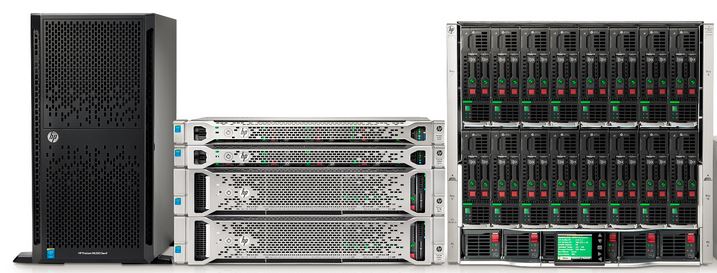What is the difference between HP DL360 g9 and DL380 g9?
The primary difference between the ProLiant DL380 Gen9 server and the DL360 Gen9 is the size of each. The DL380 is a 2U server while the DL360 is a 1U server. With a bigger footprint, the DL380 obviously needs more space in the rack, and it also can be fitted with more drives.
What is HP DL380 g9?
The HPE ProLiant DL380 Gen9 Server has a flexible redesigned chassis, including new HPE Universal Media Bay configuration options with 8 to 24 SFF and 4 or 12 LFF drive options along with NVMe options and additional rear drive support for expandability and investment protection.
What operating systems are supported by DL380 g9?
OS Compatibility
- Microsoft windows server.
- Red Hat Enterprise Linux (RHEL)
- SUSE Linux Enterprise Server (SLES)
- Canonical Ubuntu.
- Oracle solaris.
- VMware.
- Citrix XenServer.
- ClearOS.
What is the maximum memory for DL380 g9?
The Maximum amount of RAM the HPE ProLiant DL380 Gen9 server can hold is 3TB (24 x 128GB) of Registered DIMM (RDIMM) memory.
Is HP DL360 g9 end of life?
10/31/2023
HPE End of Service Life
| Model | EOSL Date | |
|---|---|---|
| ProLiant DL320e G8 V2 | 01/10/2021 | Get in touch |
| ProLiant DL360 G7 | 04/30/2018 | Get in touch |
| ProLiant DL360 Gen 9 | 10/31/2023 | Get in touch |
| ProLiant DL360e G8 | 08/16/2021 | Get in touch |
Can you upgrade RAM in HP DL360 g9?
The HPE ProLiant DL360 Gen9 will support 4GB, 8GB, 16GB, 32GB, 64GB or 128GB DDR4 dual in-line memory modules (DIMM). This server will also support 32GB, 64GB or 128GB Load Reduced Modules (LRDIMM). NVDIMMs are only supported on factory configured servers with E5-2600 v4 processors. NVDIMM cannot be mixed with LRDIMM.
Is HP DL380 g9 compatible with hard drives?
The DL380 Gen9 server supports both SAS and SATA hard drives and SSDs, so this SSD should be compatible with the server as long as it has the enterprise firmware that is compatible with the DL380 Gen9.
When did the HP g9 server come out?
September 8
The HP ProLiant Gen9 servers are due out on September 8. The company also said that we would see DDR4 and Haswell architectures with the HP Gen9 server lineup. The company also cited that the Intel Developer Forum on September 9-10 in San Francisco would be a place where we would hear more about the line-up.
HP released details on its ProLiant Generation (Gen9) server series. We already previewed one key change: there will not be an -EN series part for HP’s Gen9 servers. HP has undergone a major mindset change over the past few years. Instead of selling well designed, x86 commodity servers, HP is re-thinking how it goes to market. The vision HP is pushing is really one that compute infrastructure will increasingly be managed as pools of resources specialized for specific tasks.
The first hint at this is that both the HP Moonshot and Apollo systems. The latter of which will be dubbed a Gen9 system. These systems are built for hyperscale installations for hosting, VDI and HPC applications.
On the accelerator side, we are starting to see examples of HP’s vision. Apollo systems can utilize high-end many core PCIe add in cards such as those provided by NVIDIA, AMD and Intel for HPC applications. Moonshot has its generic x86 processors with GPUs for VDI applications, ARM and Atom cartridges for dense dedicated servers and etc.
We also know HP has been developing specific in-server PCIe storage solutions that can deliver high IOPS, high write endurance, tiered storage caching and other variations.
Beyond this, it is highly likely we will see HP utilize specialized cards to accelerate networking and encryption. We have already previewed the Intel Fortville network adapters and HP will have answers to those. As the company looks to bring software defined networking servers are likely to need PCIe based acceleration to handle encryption as pushing hundreds of gbps becomes more feasible at scale.
HP’s scaling story is building servers with each successive generation that are easier to manage in pools. HP Gen9 is rolling out with UEFI enhancements and a management platform that will aid in this effort.
The other interesting note about the announcement is the date. The HP ProLiant Gen9 servers are due out on September 8. The company also said that we would see DDR4 and Haswell architectures with the HP Gen9 server lineup. The company also cited that the Intel Developer Forum on September 9-10 in San Francisco would be a place where we would hear more about the line-up. With the major Apple event scheduled for 9/9/2014 there is a likely date for the Haswell-EP (Intel Xeon E5-2600 V3) that we can deduce from this, even if Intel is mum on the subject.
We are fully anticipating people will be extremely excited with the Haswell-EP launch whenever it may happen.
Finally, while HP is espousing the benefits of its high-end platforms, it is also rebranding some of its traditional mid-range servers as its low end. The hpe HP DL160 Gen9 and HP DL180 Gen9 servers are decedents of the previous DL360 and DL380 series servers. While some of HP’s traditional competitors such as Dell and Lenovo are hemorrhaging market share to HP’s advantage, Supermicro, Quanta, Fujitsu and others are gaining ground. HP is bolstering its lower-end offerings directly to leverage its economies of scale to hold off the threats there.

Comments on “hp server”